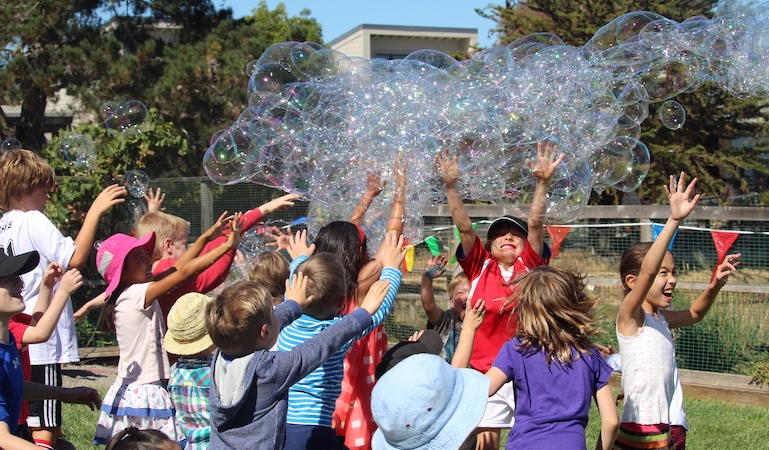Before diving into the final installment, let’s start with this helpful framing:
Which Way Do You Lean? Marlboro versus Ford:
Currently, there are two dominant ways of thinking about social media that can be analogized to the “Big Tobacco” camp and the “Car Industry” camp. The first argues that social media is irredeemable, or at least irredeemable in the near term. Just like there is no healthy way to smoke tobacco, there’s no healthy way for youth to consume social media–whatever good there may be is far outweighed by the bad.
Utah recently passed a law requiring parent approval, with legal identification verification, before anyone under 18 can access social media platforms; it also requires times at night when access is shut off. Several states are following suit. In his recent State of the Union speech, President Biden shared his belief that it’s time to hold social media companies accountable for what he called an experiment they are running for profit on our children.
Alternatively, the “Car Industry” camp sees social media as a source for much good (often cited is the fact that many youths have found important support, community, and political engagement through social media), but in need of additional safety measures (i.e. add the equivalent of airbags and safety belts). California’s lawmakers lean in this direction, focusing on pushing tech companies to consider child/youth safety in everything they do.
Regardless, there is a growing consensus that social media’s impact on youth has reached a state of crisis. Both Seattle and San Mateo are suing tech companies, accusing them of actively harming kids’ mental health.
Emblematic of this growing awareness is that the Chinese version of Tik-Tok (Douyin) only offers educational content to teens and limits the amount of time Chinese youth can spend on it (no more than 40 minutes per day); it also slows down the time between videos (trying to stop binging) and prevents teens from using it at certain hours, supporting their need for sleep.
While their version only shows videos such as teachers leading science experiments and information about animals, our US version offers such inane and dangerous (potentially lethal) viral trends as the Nyquil chicken challenge. (I heard one commentator note that the Chinese are producing future astronauts, while the U.S. youth are growing up only with dreams of becoming social media influencers.)
As parents, educating ourselves enough to decide which way we lean–Big Tobacco or Car Industry–will help us make informed, values-aligned parenting decisions for our own families.
Now, having looked clear-eyed in Part II at the three root causes working against our kids’ and teens’ well-being, and in Part I having considered ten strategies we can adopt at home to foster and support their well-being, what can we do as a whole school community to best care for each other’s children and families? How do we ensure a healthy, flourishing school community in light of the pressures that can corrode it?
In the spirit of boldness for which MMS is known, let’s strike out together with a shared vision for a community that rallies around its kids and teens with love, attention, and strength. When there is alignment between what our MMS kids and teens experience at home and at school, the depth of their learning and the benefits they enjoy are stronger and richer.
And here are final, important caveats: “A little of something is better than a lot of nothing”: Even small shifts to how we think about and manage social media and digital devices for our kids matters. This is not a zero-sum game.
I don’t know any parent who is 100 percent consistent all of the time. (For example, a number of parents I know who generally parent “screen-free” call long-distance airplane travel with their kids the “All bets off” zone, and bring on the screens in plenty for their kids during these trips.)
Perfection is the enemy of the possible. Small shifts and increasing awareness themselves matter.
Toddler & Primary Families
1. Support Nervous Systems
Have you noticed how quiet and beautifully simple the Toddler and Primary environments are and how happy the children are in them?
High-volume, frenetic energy experiences are overwhelming for little ones. Plan natural, creative, low-stimulation activities (e.g., cooking, building, art, dance parties in the living room, crafts, puppet shows, etc.)
Time in nature together helps children develop their own special relationship with the natural world; this can be a lifelong source of solace. We also know that within just minutes spent in nature, our nervous systems calm.
All of these practices will make it more likely that when your children are at school, they feel grounded and energized to learn and play.
2. Foster Independence
When they are at MMS, your children are responsible for cleaning up after themselves, hanging their coats, pushing in their chairs, etc. Bring this emphasis to your home too. (For Toddler & Primary families specifically, the site “Cloud Montessori,” curated by MMS’ own Cheryl Chretien and Aliyya Mattos, is a great resource. Check out “Help Me Help Myself: Quick Hacks for Around the Home” and “5 Household Chores for Your Child.”)
The longer-term benefits? Confidence based on competence: When children see they can do for themselves, their confidence gets stronger.
Toddler, Primary, & Elementary Families
3. Support Relationships
Cultivate MMS friendships: Knowing that supportive relationships are vital for everyone’s lives, it’s wise to invest the time and energy to arrange get-togethers (even no-frills park playdates) with other families, or host playdates with a class friend.
When we can enjoy and buoy each other as we parent together, we give our kids and ourselves the great gift of the feeling of security that comes from being woven into a larger, caring, joyful community.
4. Limit and Monitor Screen Use
Consider not giving access to them, or at least strongly limiting time for kids with screens and digital devices. This helps your child experience continuity between their MMS experience and home. (If you’ve not listened to it yet, MMS’ Director of Education for Toddler and Primary, recorded an outstanding podcast episode, “How to Build Healthy Communication Skills in the Age of the Screen.”)
Also, if some children have free rein access, the stories they share back at school become focused on what they saw on screens, which can influence the other children who then go home and plead for similar access.
When you do have children visit your home, offer a no-screen environment. Or, to ensure you’re respecting each family’s practices, agree ahead of time with families if and what the screen time will be (e.g. mediums, content, time limits, etc.)
5. Geek Out: Invest Time & Attention into Their Delights
Get excited about each child’s inclinations and interests. One of the key values of an MMS education is that your children aren’t pressured to fit a narrow definition of what makes them affirmable. Offer this gift at home too.
For example, even if you find tree frogs icky, but your kid gets fascinated by them, go for it! Take them to the library to geek out on tree frog books together. Then head over to the zoo to ooh and ahh over their tree frogs. As they get older, help them branch out even further by encouraging them to volunteer with a reptile rescue foundation (they do exist!).
The key is that by signaling delight in what delights our kids, they are learning to value and honor themselves and to trust their intuitions and inherent value. When they are older too, it will be more likely that they will find and choose a life and career path that is deeply satisfying; this is a priceless gift.
6. Read Real Books Together
This is likely already part of your routine. For Toddler & Primary children, reading aloud is so important and valuable, both for helping develop literacy and vocabulary and for helping our kids find a love for reading that can soothe and enrich their lives from here on out.
For Elementary aged children, cozy, family group readings can be very special. (We read Tolkien’s The Hobbit together and took turns reading–though I loved doing the voices so much that I probably read more than others).
We do a lot of reading at MMS, so experiencing this at home reinforces the practice and its value.
Elementary & Junior High
7. Own Your Part
We can continue to create the incredible MMS experience and environments, but if our kids and teens go home to a “tech wild west” of unfettered, unsupervised, and unmonitored access to social media, group texting, video games, and the internet, the negative effects of those activities will diminish the quality of the MMS experience, undermining the tremendous potential value.
Additionally, their activity can hurt the experience of their peers by creating a Lord of the Flies-like online culture outside of school that can generate those negative social experiences from which we are all working hard to protect our kids.
Go back to Part I, Section 2, of this series for specific guidance on how to rein it all in.
The most helpful steps you can take for the health of the kids, teens, and the whole MMS community include the following:
- Consider waiting on smartphones until high school (see Part I for terrific alternatives)
- Monitor texts if they do text
- Limit/keep them off of social media
- Collect devices at night and when kids are socializing together to encourage sleep as well as real, unfiltered human relationships and activities.
8. Be Open to Creating with Tech
In the older elementary and Junior High years, if your kids are drawn to technology, consider helping them learn how to create with it; it’s the mindless, compulsive passive consumption that is so problematic. There are healthy, age-appropriate ways into coding and robotics with products like Rasberry Pi4 and Lego robotics.
To get inspired and to learn, definitely don’t miss an outing to the Exploratorium interactive museum in San Francisco.
9. United Front
Talk with the parents of the kids your child most regularly interacts with. Get clear on your decisions and practices around digital technology and social media, and share these.
Why? Elementary and Junior High aged kids are highly socially aware and deeply interested in what engages their peers. Your child may come to you and make a case for tech use saying, “So-and-so gets to use it all the time!” Knowing the truth is helpful. Most helpful is if you and other parents can agree on shared practices. Strength in numbers.
(Also, if one of you is tech-savvy and can offer to help other parents install better protections, that is a gift to offer up.)
10. Have Each Other’s Backs
If you become aware of an MMS child or teen acting destructively online or expressing worrisome struggles or behaviors, reach out to their parents.
This, of course, can feel awkward and scary–how will they react? As long as you do this from a place of care and concern more than judgment, you can be almost certain that the parents will appreciate the reach out. It really does take a village.
If you were in their shoes, wouldn’t you want that information?
11. The Gift of Old-School Chores
Dr. Montessori observed that children want to be included in their communities and families. Daily chores (e.g. setting the table, feeding the pets, putting away the dishes, etc.) have a wide array of benefits. Connected to MMS, it reinforces the message they get from us every day that they are responsible for supporting their community and taking care of their environment.
12. Plan Healthy Group Experiences
Work together as families to support healthy, no/low-screen pro-social experiences with your kids. A day of games, group family bike rides, volunteering at a local food bank, going out to the theater together, camping trips, or simply backyard BBQs with frisbees.
These experiences offer a multitude of benefits (e.g., the value of social connections and community, introduction to new life-giving activities, relationship with nature, skills development, altruism, etc.)
Onward and Upward:
Passively accepting the status quo right now is a risk. It risks, quite literally, our kids’ and teens’ fundamental well-being. The time to act is now.
This need not be extreme. Little changes can make a big difference. If your children are still very young, take all this information and plan ahead for how you will choose to manage the digital media and social media-saturated world they are growing up in. The great news is that all is not lost. Kids and teens are highly resilient. Knowledge is power, and now that we know the dangers and the protections to ensure our kids and school community stays healthy and strong, we can take action.
This is an incredible time to be alive and raising kids. And it’s sometimes daunting and overwhelming. Let’s take a collective deep breath together. And, let’s take strength in MMS’ almost 60-year history of educating and supporting tremendously healthy, positive development in kids and teens.
Let’s pivot and adapt in that spirit to meet most fully and effectively this new stage in human history. We’ve got this.

As Head of School, Sam is responsible for ensuring that Marin Montessori flourishes and that the School’s mission is brought to life each and every day.





